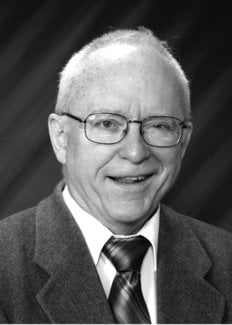John L. Hall
Biographical

John Lewis Hall (known by many as Jan) was born on August 21, 1934 in Denver, Colorado. His father (John Ernest Hall) was trained as an electrical engineer and worked for the U.S. Bureau of Reclamation on many hydroelectric projects here and overseas. His mother, Rae (Long) Hall was an elementary school teacher and singer. Jan’s interests in electricity and radio were supported by parental interest, but his research on black-powder rockets was gradually replaced by social activities such as scouts and a church youth group. After completing public schooling in Denver, he received a Westinghouse Scholarship to Carnegie Institute of Technology (now Carnegie Mellon University ) and earned a B.S. (1956), M.S. (1958) and Ph.D. (1961) in Physics from the Carnegie Institute of Technology. He did his thesis work with Professor Robert T. Schumacher using a self-made electron microwave spin resonance spectrometer to study the hyperfine spectrum of interstitial hydrogen atoms in CaF2 crystals. While considering various postgraduate opportunities, he chanced on a call for applications to be a National Research Council Fellow at the (then) National Bureau of Standards in Washington, D.C. Toward the end of that postdoc year, he was invited to join others from NBS to start a new research group at the University of Colorado Boulder campus. Since 1962, he has been responsible for a number of major innovations and developments in laser technology at JILA (formerly called the Joint Institute for Laboratory Astrophysics), operated by the University of Colorado and the National Institute of Standards and Technology (NIST).
He has authored more than 230 articles in refereed journals, and holds ten U.S. patents. He is a member of the National Academy of Sciences, and is a Fellow of the Optical Society of America and the American Physical Society. He is also a Senior Fellow Emeritus of the National Institute of Standards and Technology, and a Fellow Adjoint of JILA. He has trained numerous graduate students and post docs in the Physics Department at the University of Colorado , Boulder. He retired from NIST in November, 2004, but is still active in JILA and his consulting company (Hall Stable Lasers, LLC). His electronics hobbies and electro-optical systems design provide satisfying outlets for him, often leading to specialized instruments and other technical innovations, and occasional patents.
His JILA work has been recognized through a number of awards from NIST, the Department of Commerce, and the U.S. Office of Personnel Management. He has been awarded many professional, peer-generated honors by the Optical Society and the American Physical Society. In 2004, he received the IEEE Rabi Award and became a member of the French Légion d’Honneur. In 2005, he shared the Nobel Prize in Physics with T.W. Hänsch and Roy Glauber for “contributions to the development of laser-based precision spectroscopy, including the optical frequency comb technique.”
Also a graduate of Carnegie Mellon, his wife, Lindy, (the former Marilyn Robinson) holds a Bachelor’s degree from the Margaret Morrison Carnegie College (1957), and a Master’s degree from Carnegie Library School (1959). She taught 7th grade English in a Boulder junior high for 17 years, followed by 5 years as media specialist there. She remains active as a consultant in curriculum development. They have three children, two in Colorado: Carey, who teaches in a middle school of the Jefferson County School District, and Jon, who specializes in automotive computer and engine troubleshooting. Thomas is a field engineer for a computer company near Boston. With his wife Margaret, and their two daughters (aged six and eight) and son (now two and a half), they often accept visiting grandparents at their home in Quincy, MA. A favorite gathering place for all is their mountain cabin at Marble, Colorado, in the mountains west of Aspen, which was built by the family during the 1980’s. Jan is very proud of having done the electrical wiring and plumbing entirely by himself, and receiving no red flags or violation notices from the State inspectors.
“I am truly fortunate to have somehow always been in the right place at the right time, to capitalize on technical advances that made increasingly precise laser measurements and applications possible. I have worked with amazing colleagues and students, whose enthusiasm and vision made for excellent physics, great fun and the building of important programs. It was a great 45 years and I have really loved it. But nowadays Lindy and I often discuss my in-process transition on to personal plans and activities, leaving the next dazzling science to my younger friends.”
This autobiography/biography was written at the time of the award and later published in the book series Les Prix Nobel/ Nobel Lectures/The Nobel Prizes. The information is sometimes updated with an addendum submitted by the Laureate.
Nobel Prizes and laureates
Six prizes were awarded for achievements that have conferred the greatest benefit to humankind. The 14 laureates' work and discoveries range from quantum tunnelling to promoting democratic rights.
See them all presented here.
